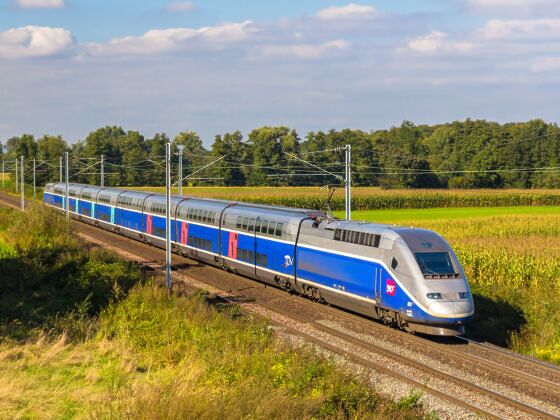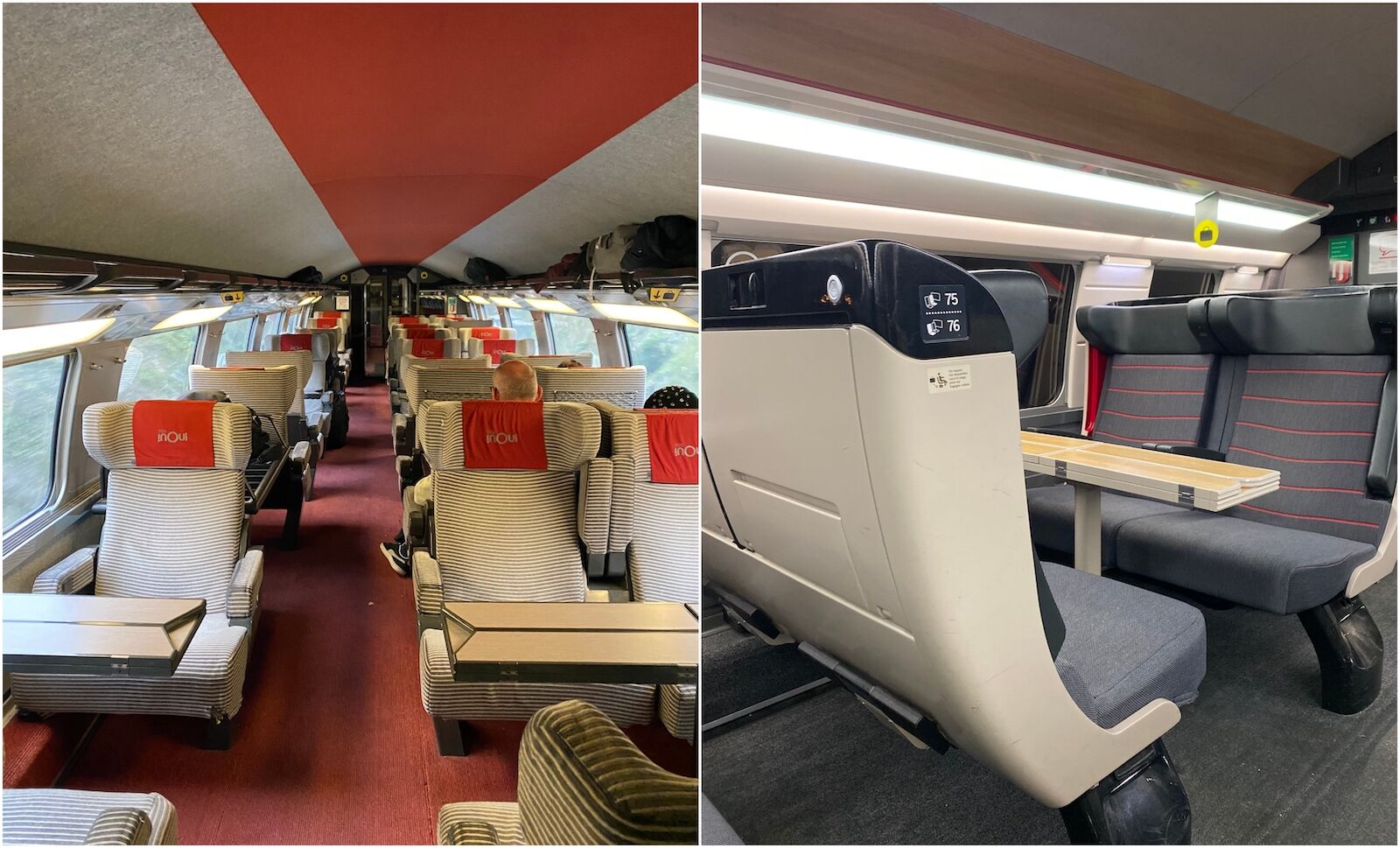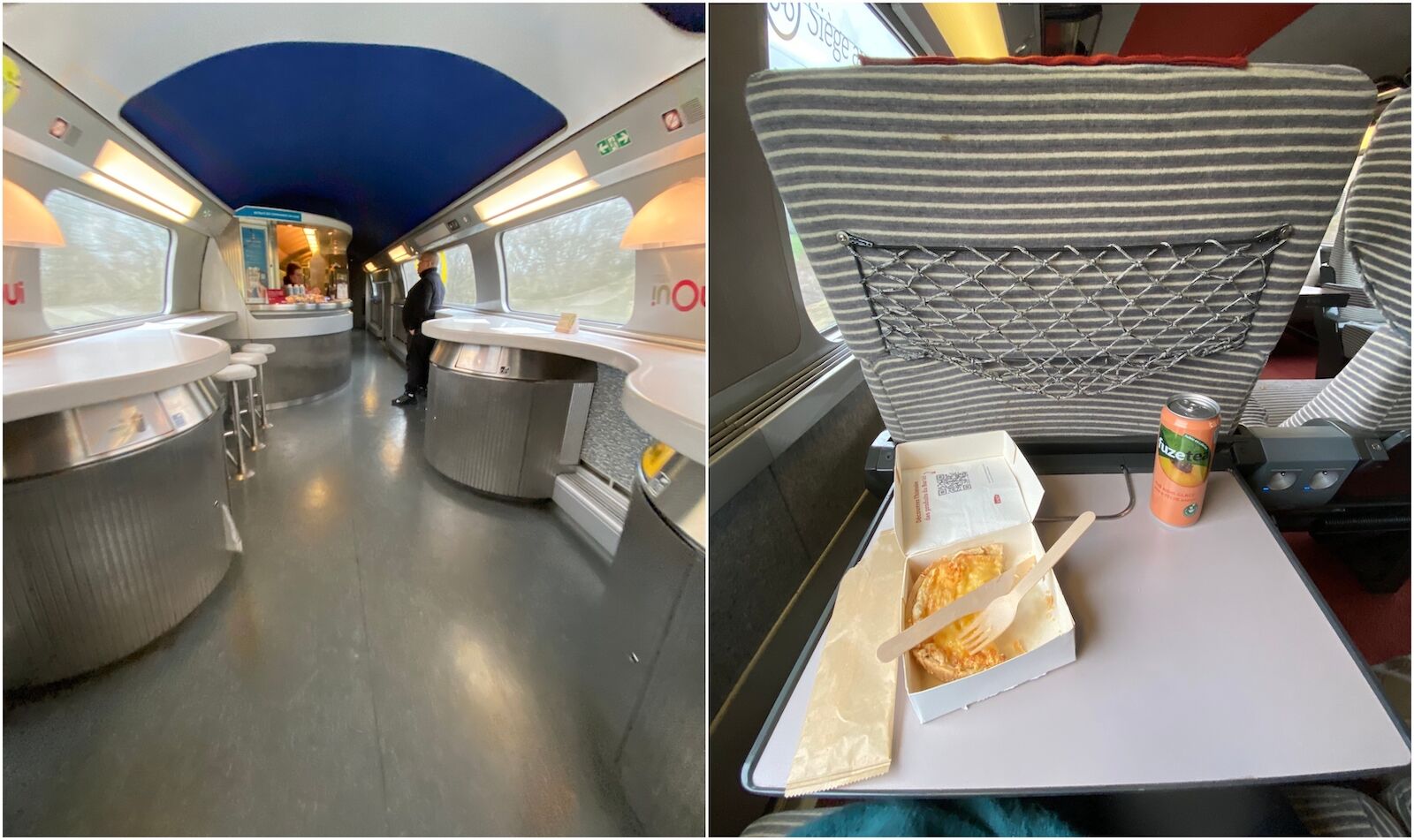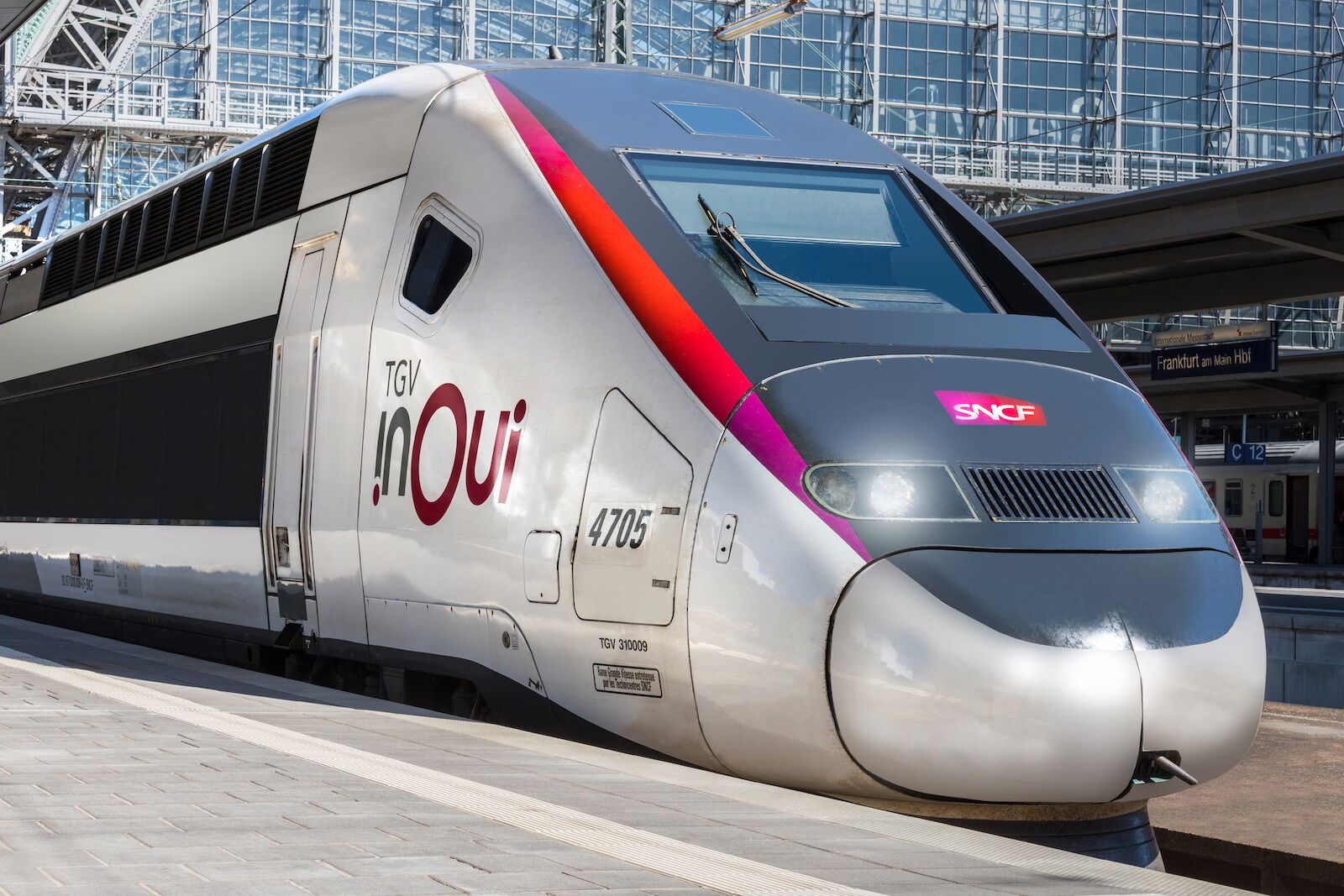If you ask French people what they think of the SNCF, the French national railway company, many will complain about how often the employees are on strike (not that often, really). However, you won’t hear many grieve about the frequency of the trains, the extent of the network, or the price it costs to ride the rails. That’s because the rail service in France is exceptionally good. I’ve been riding trains all over the world for over 20 years and, in my opinion, few places can match the rail service you get in France other than maybe the extensive rail network in Japan.


How I Took an Affordable First-Class Train Trip Across France
Recently, I crossed France by train. I traveled from the town of Saint-Nazaire in the west of the country to Dunkirk, which is as far north as you can get in continental France, and back. It was an effortless, comfortable, and affordable trip. If you, too, want to cross France by train, here’s how you can do it easily and for cheap.
Trains in France: route maps and numbers
The French railway network is a well-oiled machine that has been getting bigger and better for nearly 200 years — and shows no sign of stopping. The first passenger train started running the 37 miles between the cities of Saint-Etienne and Lyon in 1831, and today, according to a 2023 report, there are 18,000 miles of railways, including 1678 miles of high-speed railways, that cover just about every corner of France (see the network map). The SNCF network carries a staggering 5 million passengers every single day in 15,000 trains. If you want to visit France, and even travel across the entire country like I did, riding the train is the way to go.
My train trip across France
I traveled from the town of Saint-Nazaire to the town of Dunkirk on January 2, 2024. When I booked my trip via SNCF Connect, I booked a round-trip ticket with a return trip that followed the same itinerary, but in reverse.

Photo: Google Maps
This train trip in both directions involved one connection in Paris, which is very common when traveling cross-country since the French capital is also the country’s train hub. Navigating between the train stations in Paris is straightforward if you do a little prior research. My connection in Paris meant that I had to switch train stations. I arrived in the Gare Montparnasse, which deals with all train traffic to and from the west, and made my way to Gare du Nord, which deals with all train traffic to and from the north. The two stations are only a 15-minute metro ride away via line four (shown in purple on the Paris’ metro map). The metro ticket cost $2.34 (2.15 €) and took less than 10 minutes to purchase via a ticket machine. Note that you need at least 75 minutes to change train stations in Paris without feeling too much of a time pressure.
The trip from Saint-Nazaire to Dunkirk took 7.5 hours, including a 2.75-hour connection in Paris.

Photo: Google Maps
While I was meant to travel back from Dunkirk via the same itinerary in reverse, I had to change my ticket at the last minute. The cancellation of my initial ticket cost me $21 (19 €), but my new booking allowed me to avoid connecting in Paris via the dodgy Gare du Nord. I traveled from Dunkirk to the town of Arras by regional express train, then caught a high-speed train from Arras to the city of Nantes, then hopped on another regional express train from Nantes to Saint-Nazaire. The inbound trip was longer than the outbound one by an hour because it involved slower trains and two connections instead of one.
How much I paid and how it compares to driving
I paid $68 (62.50 €) for my outbound journey, and $72 (66 €) for my initial inbound journey, both of which were booked in first class. First-class seats are larger, more comfortable, and you can even opt for single seats by the window for maximum tranquility. First-class cars are also quieter than second-class cars, which is great for those who wish to work on the go.

First-class car on two different TGVs. Photo: Morgane Croissant
Because I canceled my inbound ticket only a few days before it was meant to take place, I paid a fee of $21 (19 €). Also, because I booked another inbound ticket at the last minute, I spent nearly double what I initially paid for the journey: $122 (112.20 €).
At the time of writing and according the pricing tool provided on the official website of the French highways, driving between Saint-Nazaire and Dunkirk takes seven hours (if you only include one 15-minute break) and costs over $141 (130 €) in gas and toll fees.
What I ate on the way
French high-speed trains have at least one café car (known as the “bar car” or voiture bar in French) where you can purchase cold and hot beverages, sandwiches, hot meals, desserts, baked goods, and treats. The food is very decent and the prices are reasonable. There are combo meals with drinks and desserts so you can have some proper food on board. Check out the menu to plan ahead of your trip.

Café car on board the TGV and my meal on my cross-country trip. Photo: Morgane Croissant
I had something homemade on my outbound trip, but I purchased my lunch on board the high-speed train during the inbound journey. I ordered an ice tea, a vegetarian quiche (heated), and a fruit compote for $10.35 (9.50 €).
When to book your tickets on French trains?
If, like me, you can plan your trip well in advance, go to the SNCF Connect website four months before the start of your trip. This is when the high-speed train tickets become available for purchase and it is when you can get the best prices.
Booking a round-trip ticket will cost you less than buying two separate one-way tickets. If your departure date is four months ahead and your return date is later, wait until the tickets for the return date are available for purchase, or purchase a fully refundable and exchangeable return ticket for another date and make the change when needed.
I purchased my ticket three months and 10 days in advance of my trip, and I’m confident I got close to the best price possible. Note that because I was traveling to Dunkirk on January 2, the day many people were returning to work after the holidays, waiting any longer to make my purchase would have cost me a lot. Trains do get 100 percent full at certain times of year, especially on the weekends before and after Christmas and New Year, the weekends before and after school holidays, and during long weekends. Don’t wait until the last minute or you may not get a seat.
How to get a cheap train ticket to travel in France?
The tried and tested way to get the cheapest train ticket in France is to book it as far in advance as you can. In my experience, you can pay twice as much if you book at the last minute. Also, booking early allows you to travel in first class for only a few euros more than you would pay to travel in second class. Price differences between the two classes of services are tiny, as long as you plan ahead.
Another way to save money on your train tickets is to get a discount card. While they may appear to be expensive at first, they can save you a lot of money. Upon booking this trip, I purchased a Carte Avantage Adulte TGV INOUI for $53.31 (49 €) which allows me to save 30 percent on all my high-speed train trips for one year, 15 percent in the high-speed train cafés, and more. The discount card was paid off in just one trip. There are discount cards for every age group and every travel need out there, so make sure you have a good look at them before you plan a train trip around France.
What’s the difference between a TGV, TGV INOUI, TGV OUIGO, and TER?

Photo: Tobias Arhelger/Shutterstock
The multitude of train designations in France, often acronyms, can be confusing to outsiders:
- TGV is the acronym for Train à Grande Vitesse, i.e. high-speed train
- TGV INOUI is a high-speed train that offers two classes of service and a more premium service
- TGV OUIGO is a low-cost TGV service with one class
- TER is the acronym for Train Express Regional, i.e. Regional Express Train. While “express” is in the name, they are not necessarily fast.